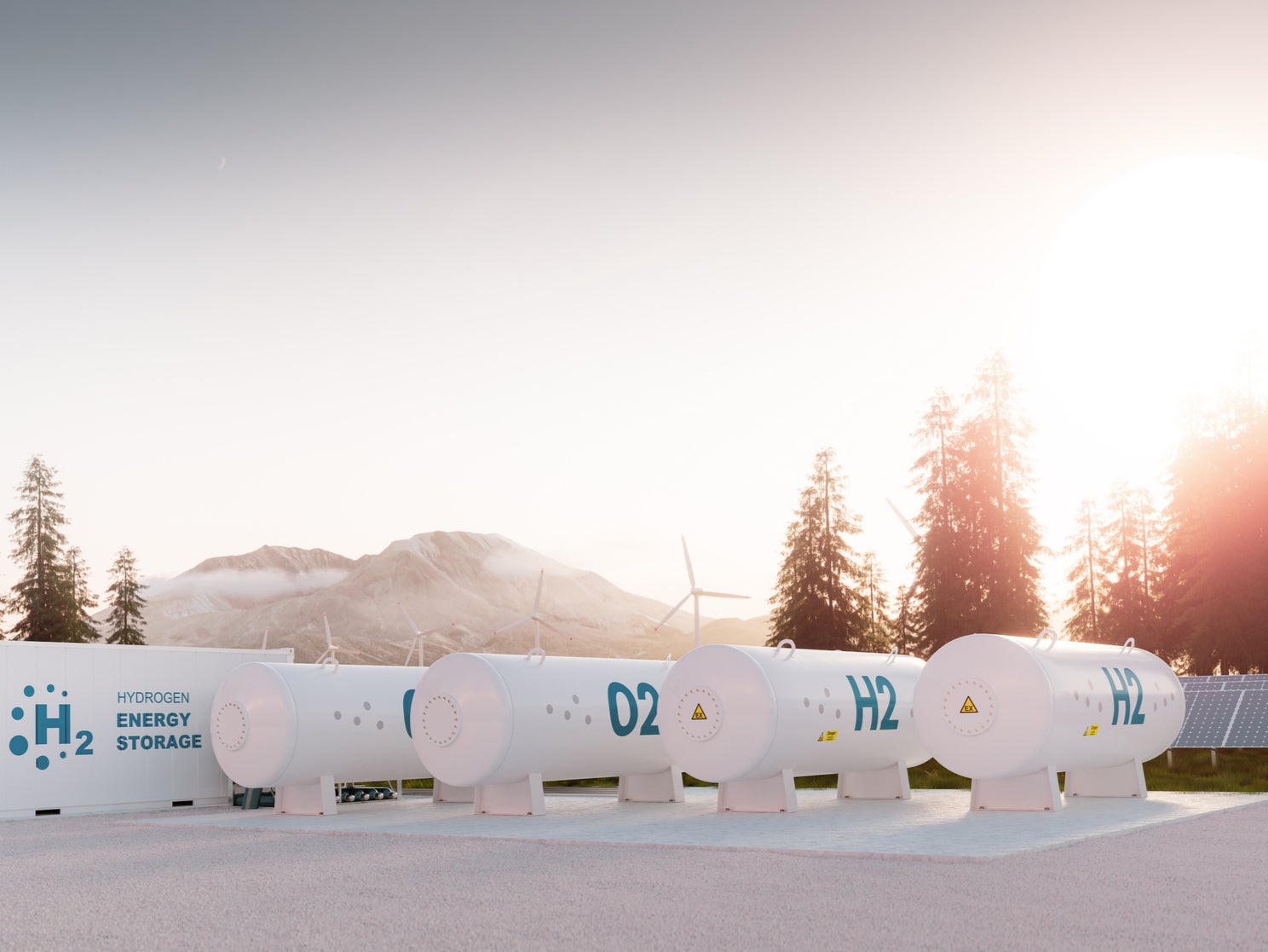Recipe for ‘entirely renewable energy’ from water is nearing reality
Vast reductions in level of electricity required to produce hydrogen from water could power green revolution, scientists believe

Your support helps us to tell the story
From reproductive rights to climate change to Big Tech, The Independent is on the ground when the story is developing. Whether it's investigating the financials of Elon Musk's pro-Trump PAC or producing our latest documentary, 'The A Word', which shines a light on the American women fighting for reproductive rights, we know how important it is to parse out the facts from the messaging.
At such a critical moment in US history, we need reporters on the ground. Your donation allows us to keep sending journalists to speak to both sides of the story.
The Independent is trusted by Americans across the entire political spectrum. And unlike many other quality news outlets, we choose not to lock Americans out of our reporting and analysis with paywalls. We believe quality journalism should be available to everyone, paid for by those who can afford it.
Your support makes all the difference.Generating “entirely renewable clean energy”, from which water would be the only waste product, is feasible — and scientists are “homing in” on the exact means of achieving it, according to new research.
A team from Trinity College Dublin is “fine-tuning” a means of using renewable electricity to split water molecules into their constituent atoms, to release energy-rich hydrogen, which they say could be stored and used in fuel cells.
The process is already possible, and can be done using wind or solar power to generate the electricity required to split the water molecules. But the idea is yet to take off in a big way, as the amount of energy required from these renewable resources to produce hydrogen remains very high.
However, the new research suggests instead of harnessing large amounts of renewable energy, the same result can be achieved through using a particular combination of other elements as catalysts which drive this reaction.
It is already known that elements such as ruthenium or iridium are highly effective catalysts which can split the hydrogen and oxygen molecules in water, but they are “prohibitively expensive” and too scarce to be used on an industrial scale.
Instead, the scientists turned to powerful computing methods and advanced quantum chemical modelling to come up with combinations of metals which could drive the necessary reaction.
Quantum chemistry is the application of quantum mechanics to chemical systems, in which the understanding electronic structures and molecular dynamics is key.
So far the work has pinpointed nine earth-abundant combinations of metals and ligands (which glue them together) as “highly promising leads for experimental investigation”.
Three metals stand out, the research team said. They are chromium, manganese and iron, which are believed to be particularly promising candidates.
“Thousands of catalysts based around these key components can now be placed in a melting pot and assessed for their abilities as the hunt for the magic combination continues,” the team said.
Dr Max García-Melchor from Trinity College, the senior author on the research, said: "Two years ago, our work had made the hunt for the holy grail of catalysts seem a little more manageable. Now, we have taken another major leap forward by narrowing the search area significantly and speeding up the way we search.
“Until recently we were looking for a tiny needle in a huge haystack. After reducing the size of the haystack, we have now hoovered up plenty of the remaining hay. To put a sense of scale on this, two years ago we had screened 17 catalysts. Now we have screened 444 and believe it won’t be long before we have a database with 80,000 ‘screenable’ catalysts in it.”
He added: “How can we live sustainably? That is arguably the biggest and most pressing question facing 21st century society. I believe researchers from all disciplines can help to answer that, and we feel a particular strength of our pursuit is the multi-disciplinary approach we are taking.”
Michael Craig, a PhD candidate at Trinity, is the first author of the journal article. He said: “It seems hopeful that science could provide the world with entirely renewable energy, and this latest work provides a theoretical basis to optimise sustainable ways to store this energy and goes beyond that by pinpointing specific metals that offer the greatest promise.
“A lot of research has focused on the effective yet prohibitively expensive metals as possible candidates, even though these are far too rare to do the heavy lifting required to store enough hydrogen for society. We are focused on finding a long-term, viable option. And we hope we will.”
Scientists have recently warned that the energy demands for hydrogen production could outpace growth in renewable resources, meaning hydrogen-hungry processes could spark greater demand for fossil fuels in the short term, if there is a boom in hydrogen demand.
The research is published in the journal Cell Reports Physical Science.
Join our commenting forum
Join thought-provoking conversations, follow other Independent readers and see their replies
0Comments